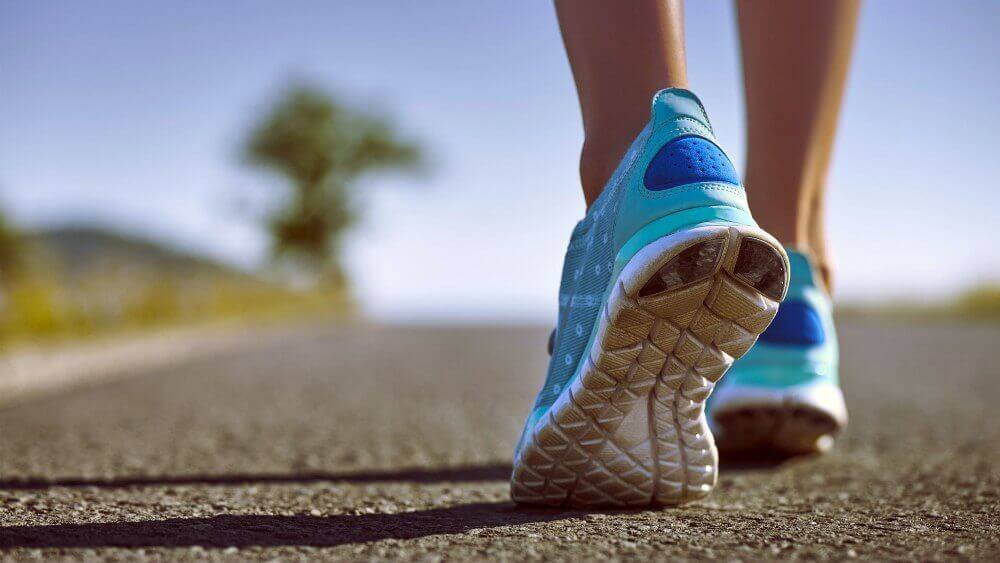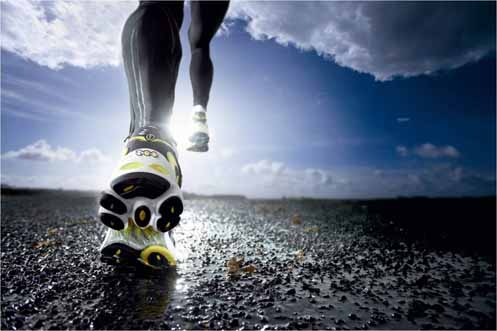Happy New Year, many intend to go in for sports and choose a career as an activity, if not simpler, but more economical, to realize this new goal. It’s also selling time, so it’s time to buy sneakers at a more affordable price. However, this is not an easy task. Today, there is an endless variety of models, colors, sizes, cushioning, soles … and the mere fact of going to the store for sports shoes becomes a “high risk” business.

In this report, we will try to resolve all your doubts about the sneaker, so that your choice is the most correct and so that you can enjoy them for miles.
The first step is to avoid mistakes. According to the experts that CuídatePlus consulted, these are the most common:
- Buying according to design or fashion: “Some runners worry too much about fashion and neglect the really important aspects,” says Christian Herranz, personal trainer and physical therapist from Blua, Sanitas. “It is much more important to focus on comfort, functionality and size than on aesthetics,” says Miguel del Valle Soto, professor at the University of Oviedo School of Medicine.
- Order them online: “It will always be necessary to try them on before buying,” says Herranz.
- Wrong size. “Shoes have to fit your feet perfectly (both in length and height), and for that you have to feel free to try the product,” recommends Del Valle Soto. “In some stores, they use devices to accurately measure the length and width of the legs,” he says, which will help with the selection. It should also be borne in mind that with the race “the leg grows a little, that is, it swells up, and therefore it is good if you run a little, buy shoes and put on the socks that you usually run in,” the expert points out. For now, according to Herranz, you should not use the same size as for street shoes or footwear, as “sneakers may vary due to strength, design and the way the shoe is sewn,” and that should be taken into account as well.
- Shopping at the wrong time of the day: “People often come in the morning to try them on, which is a mistake, as their legs start to swell in the morning, and they don’t stop until 4:00 pm, that is, when they reach their maximum size” – says Herranz. Therefore, it is always advisable to buy shoes during the day.
- Regardless of the type of surface you are going to run on. And running on asphalt is not the same as, for example, on mountains or trails.
- Excluding weight. “The more weight, the more you need to cushion the shoe,” Del Valle Soto recalls.
- Buy shoes with injury. “This is an error because the trail usually changes.”
What should I see?
Knowing what not to do, the next step is to know what we should be looking at. As Del Valle points out, “all boots have two main functions: to protect the foot and to complement it in its functions.” In addition, “they should be comfortable, lightweight, with good grip and good stability,” he adds.

Erranz believes that at least these six aspects should be taken into account:
- Body mass. It is important to see the range of recommended weights in relation to damping and stability. »If we weigh around 60-65 kg, we will choose lighter shoes and less shock absorption than if we weighed more. In this case, a lighter shoe with more cushioning will be chosen. ”
- Arch of the foot: “A person with a low arch (or flat feet) should not buy shoes with a pronounced arch, on the contrary, a person with a high arch should not use shoes with a low arch.”
- Foot width. Some brands produce more than one width for their footwear: ‘D’ for men and B for women, which we usually find in all shoes on the market. ” For narrow legs, there is sometimes a “B size” for men. On the other hand, for wide legs there is a size 2E for them and D for them. ” If both have very wide legs, sometimes you can find size 4E for men and 2E for women. ” It is important to note that “the difference between width and width is half a centimeter”.
- Frequent Injury: “It is important to determine whether a person has suffered from any injury or not, as there are slippers that can reduce the risk, or at best be preventable.” For example, “if you have plantar fasciitis, it is important to look for models that provide arch support, and for problems with ankle or knee sprains, shoe stability should prevail.” ,
- Size: “The leg usually swells in a race when it is over 5 kilometers, so it is important to choose some margin when choosing the size to avoid chafing and blistering.” As he warns, “this does not necessarily mean choosing another number, as sometimes half the number is enough. ”
- Weather: “If you usually run in rainy weather, you should look for models with good grip, especially if you are running on asphalt or cement.
This is not the same mountain as the asphalt
In addition to the above, the runner should also be aware that racing in the mountains is not the same as racing on asphalt, as terrain requirements change and shoe characteristics must be tailored to each terrain.
For running on asphalt, according to Del Valle Soto, “the shoe must have all the qualities mentioned and, moreover, have better cushioning to absorb impacts.” They also “should have good reactivity.” The soles are generally smoother, “looking for maximum contact with the asphalt, and heavier.” On the market you can find some types with “soles made of different materials that make them more elastic, that make them more reactive, that is, they store energy to accelerate takeoff.”
On the other hand, if the terrain is rocky, along roads, trails and cliffs, choose running shoes that provide better grip, protection and strong stability, ”Herranz points out.
In this case, according to Del Valle Soto, “damping will be less important because the terrain is not as hard as cement or asphalt, although it also needs to be considered that heel impacts increase in downshifts and on very steep slopes.” Mountain sneakers “must therefore adapt to uneven terrain and slopes.”
Another aspect to consider when choosing the right mountain racing shoe is the fit. “It is very important that the shoes fit perfectly, especially in the toes,” says Del Valle Soto. The feet “must be well supported by the shoes so that they do not slide forward and do not injure the nails and toes.”
In addition, “they should provide good dynamic lift control.” According to various studies, a high lift buckle is also recommended for these races.
The soles of this type of shoe are also very different from those used for running on asphalt. This “requires all-terrain soles, sufficient firmness in the areas of greatest friction (forefoot and heel) and patterns (more visible studs) to avoid slipping.” With mud, snow or wet ground, “more grip is needed,” indicates Del Valle Soto.
What about the trail?
When choosing the perfect shoe for racing, the tread is important, but “not critical,” according to Herranz. There are three types of steps: pronator, instep and neutral. The first, “is characterized by the ankle pivoting towards the inside of the foot during the protector,” explains the expert. This, he said, “is not necessarily a bad thing, as it’s the skin’s natural mechanism to soften the body, but sometimes over-pronation can cause abnormalities that need correction.”
In these cases, the insoles will be used to adjust the seat and, of course, purchase special shoes for pronators. It is important to note that “60% of runners pronate, to a greater or lesser extent, and sometimes appear on pronation when we are tired or start to neglect technique.”
On the contrary, and contrary to what people think, “to be an instep support (that the ankle turns outward in the protector) is rare.” However, according to Herranz, “there are many people who keep asking about specific arch support shoes.”
It should be clear that “the presence of a cavity for the foot or the fact that shoes are worn outside does not mean that a person is an instep support. In fact, only 4-5 percent of runners survive, so there are no special shoes for them. ” In these cases, “you have to go for neutral and highly flexible shoes,” he advises.
When it comes to retirement times, the general rule of thumb is to change every 650 km and about 900 km, says Herranz. In the case of running shoes, “they can be used up to 1200 or 1300 km as they tend to be stiffer.”
According to Del Valle Soto, “it is best to control how the materials of the shoe degrade, especially the wear of the sole, and change it, given that it is better to fail than to run miles.” “. He concludes, “Investing in good footwear can save money in the treatment of injuries from falls or overload.
